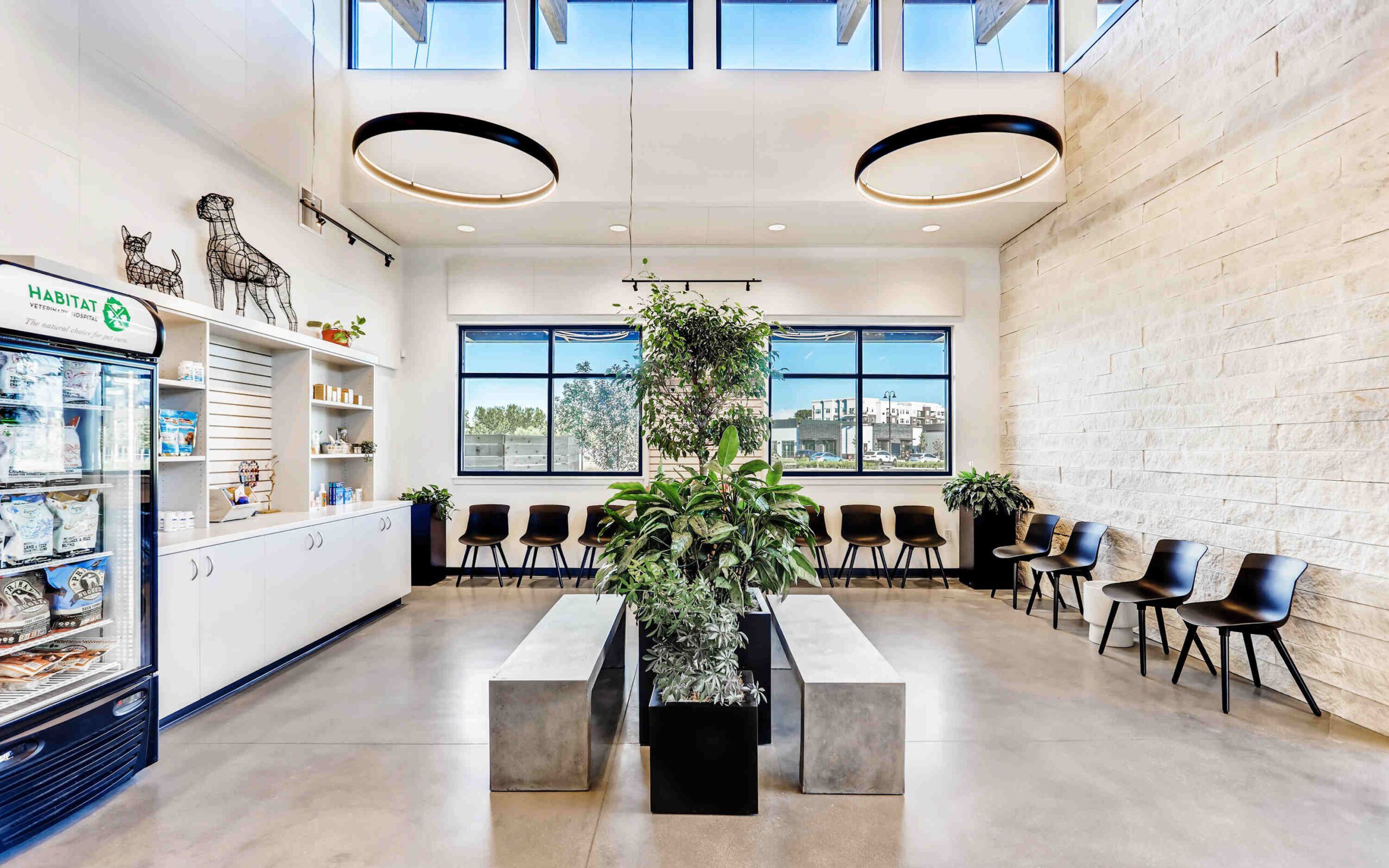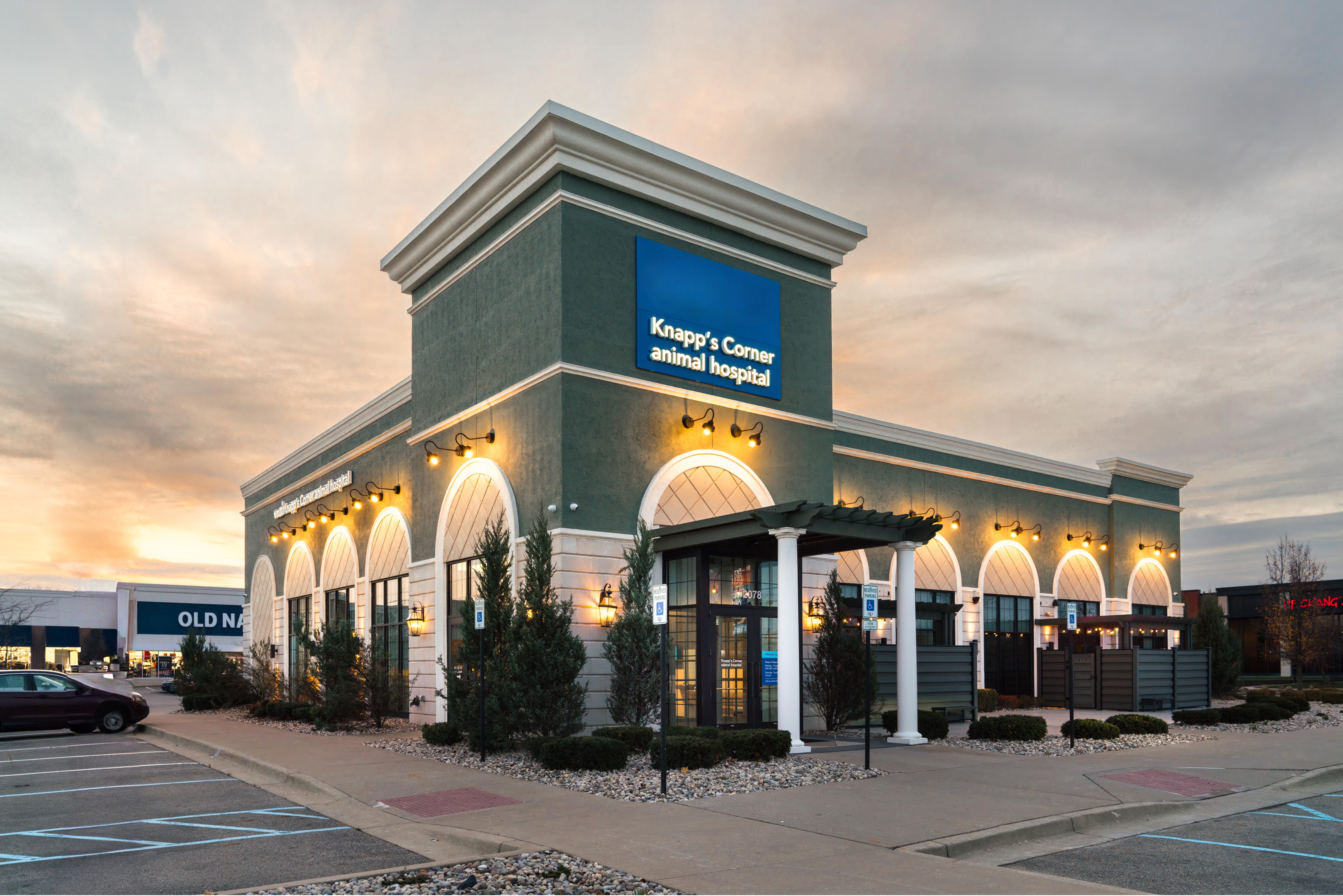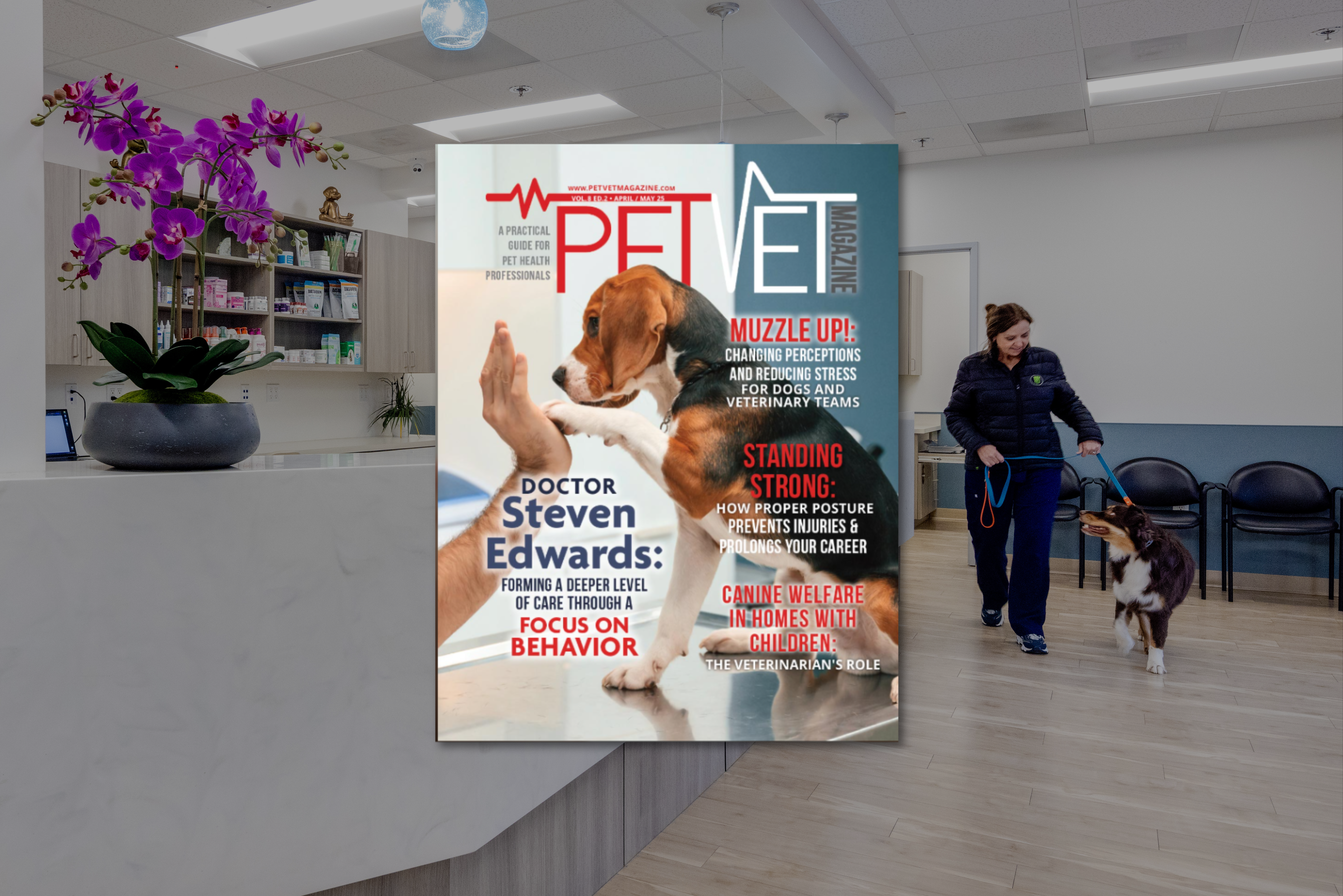The bane of every general veterinary practice you have visited, or dreamt of building, may very well be the traditional waiting area. Every expert says you must have one, but these often-oversized rooms are typically the single largest non-revenue generating spaces in your practice. Have you ever wished there was a way to shrink the waiting room without off-putting your clients? Have you dreamed of repurposing that space into one that generates income?
The expansion of the traditional waiting room can be traced back to multiple circumstances, including larger practices needing to see more clients, the increase in retail displays, operational processes that tie up exam rooms beyond the scheduled appointment times, and providing greater separation between clients to accommodate a fear free waiting environment. However, if the pandemic has taught us anything, it’s that the spacious waiting rooms we’ve known for the last few decades aren’t necessary to maintain and grow a profitable practice. Veterinarians can now explore alternatives to repurpose this space and its long-established functions.
So, what does it take to change the concept of a traditional waiting room?
Understanding the Purpose
First things first. You must take the time to understand the issue and approach it from a different angle. For the space to change, you, your staff, and your design team need to accept that benefits from the waiting experience are minimal. Think of the waiting room as merely a pause station – a brief moment before entering the main experience. With that said, it’s important to recognize that if you are on time with appointments as the veterinarian, your clients, and patients will learn to arrive on time as well – minimizing the time spent and the number of people present in the area.
The Invasion of Retail
Many waiting areas have shifted to include retail options with hopes of clients seeing pet food and sparking the mental note that they’re running low and need to purchase it. However, that revenue stream consistently gets more tenuous with competition from big box retail pet stores and the convenience of online shopping. During the pandemic, our veterinary clients interestingly noted that their retail sales did not dip – even though patients and their owners were not allowed in the waiting area. Practices simply became proactive and trained their staff to ask if the client needed pet food based on the date of their last purchase. Staff then had it ready and waited by the front door as the patients checked out. With this approach, you may only need to provide a small, short-term storage area near your reception stations for retail rather than designating a large portion of your waiting room for its showcasing.
Convenience of Curbside
Practices are continuing to offer the convenience of curbside services post-pandemic. It provides a more at-ease experience for skittish pets or those more comfortable in their vehicle. Adding this alternative check-in and waiting method requires no additional space and is an appreciated feature for clients. With cloud-based practice management systems, earbuds, and mobile tablets, it is easier than ever to untether your reception staff and extend your greeting services anywhere on the premises.
Reducing the need for space to accommodate chairs, end tables, retail displays, and their associated circulation can provide additional space for an exam room in your practice. The reuse of the space comes with inherent advantages including; 1) offering a critical care exam/triage space to minimize the effect of unexpected patient arrivals during the day, and the back-up it causes in the waiting area, 2) a space to leverage the use of your practices LVT’s to see appointments not requiring a doctor’s care, so that doctors can see more patients in any given day, and 3) it transforms a non-revenue generating space into high revenue generating space with minimal construction costs.
Architects wouldn’t dream of telling you how to practice, but they should be willing to take the time to understand your business and think outside the box. Animal care facilities aren’t a one-size-fits-all and these alternatives can help get the most out of the space you have, increase profitability, and deliver your services in a timely and predictable manner to improve patient results and client satisfaction.

Written By Jeff Clark, AIA, ICC, AAHA
MD Architects is a full-service, relationship-based firm dedicated to providing superior planning, design, specifications, and construction guidance to animal care, human healthcare, and commercial industries.
July 17, 2023




